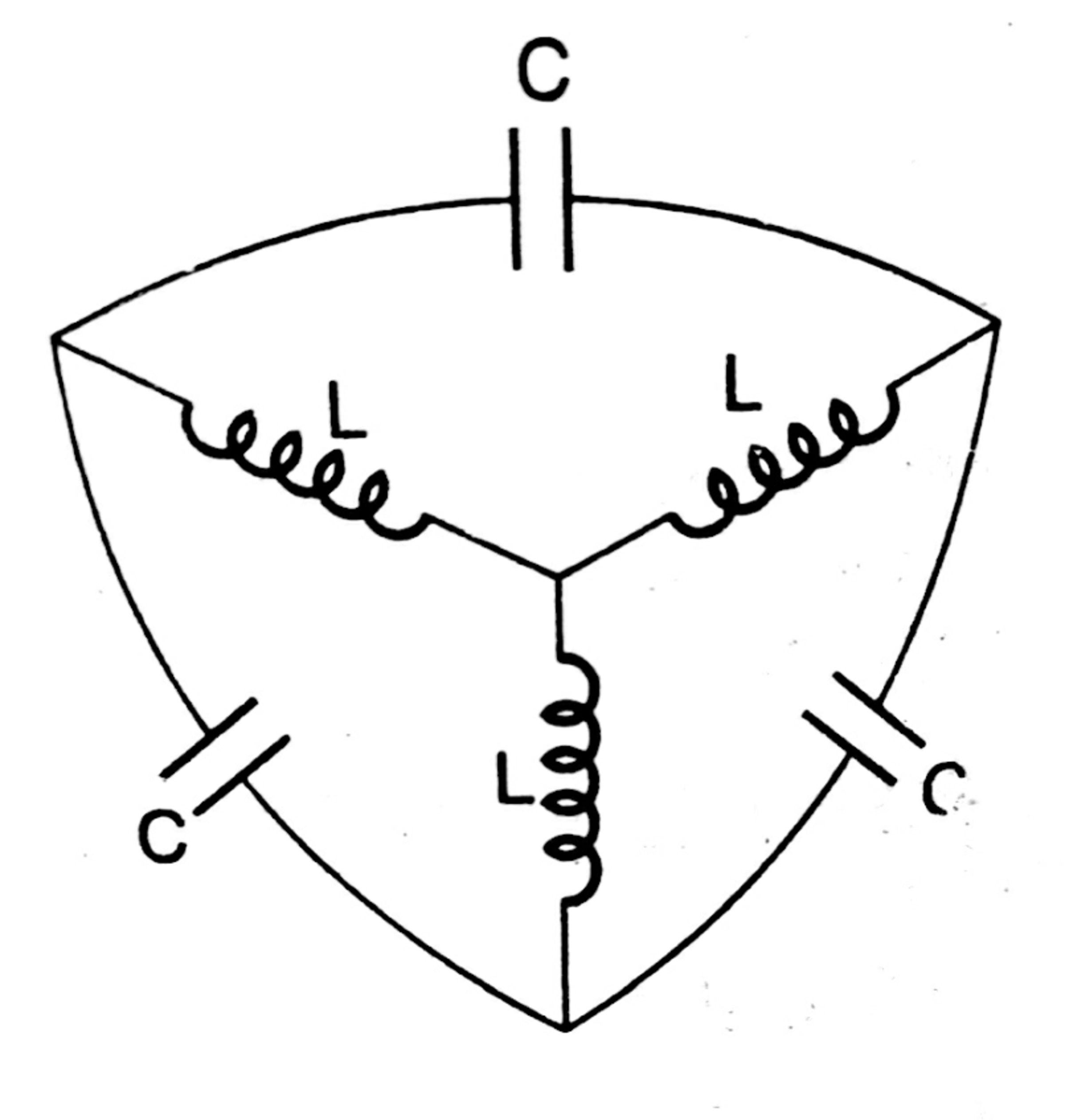Resonant Frequency
Three identical capacitors and three identical inductors are connected as shwon in figure.

Find the resonant angular frequency?
Details and Assumptions
1)
C
=
1
2)
L
=
1
3)
The wire used in the circuit have
0
resistance.
The problem is not original.
The answer is 0.577.
This section requires Javascript.
You are seeing this because something didn't load right. We suggest you, (a) try
refreshing the page, (b) enabling javascript if it is disabled on your browser and,
finally, (c)
loading the
non-javascript version of this page
. We're sorry about the hassle.
2 solutions
Elegant solution and a nice problem. I just solved it.
Since no source is powering this circuit, I think that a more appropriate term for the frequency of the circuit is not 'resonant frequency' but rather 'natural frequency'. The name of the problem needs a revision.
A voltage source is considered in the solution, so in that context, 'resonant frequency' sounds appropriate to me. Resonance is a phenomenon rigorously analysed when any system (mechanical or electrical) is subjected to a sinusoidal 'forcing function', which is not the case here. The given circuit is an example of an autonomous system. Resonance occurs when the frequency of the forcing function matches the natural frequency of the system.
Denoting 3 smaller loops' currents as i 1 , i 2 and i 3 , respectively, and making sure they have the same orientation, by Kirchhoff's voltage law we have for one loop: Q 1 / C + L d t d ( i 1 − i 2 ) + L d t d ( i 1 − i 3 ) i 1 + 2 L C d t 2 d 2 i 1 + L C d t 2 d 2 ( − i 2 − i 3 ) = 0 = 0 By Kirchhoff's current law applied to the central node, we have i 1 + i 2 + i 3 = 0 , so our equation becomes: i 1 + 3 L C d t 2 d 2 i = 0 . Due to the symmetry of the circuit, we get the same equations for other two loops. We read off natural angular frequency of the circuit to be ω = 1 / 3 L C .
@Uros Stojkovic Hii sir.
Can you suggest me a book where I will get a very good problems of electromagnetism.
Also let's be friends
Log in to reply
I'm sorry to disappoint you, but the truth is I don't know many textbooks on electromagnetism in my mother tongue, let alone in English, so I cannot recommend you any.
Using the delta wye transform , we can re-write the circuit with both capacitance and inductance in a parallel wye configuration, as shown below:
Then we can imagine hooking up a three phase AC voltage source to this circuit to do a frequency sweep. The resonance angular frequency, based on the per-phase inductance and capacitance is:
ω = 3 L C 1 = 3 1